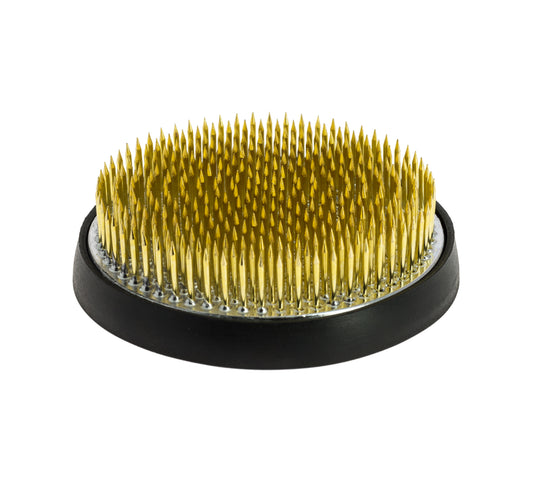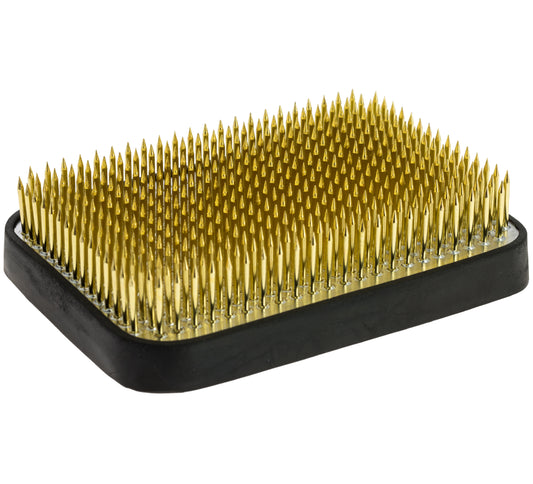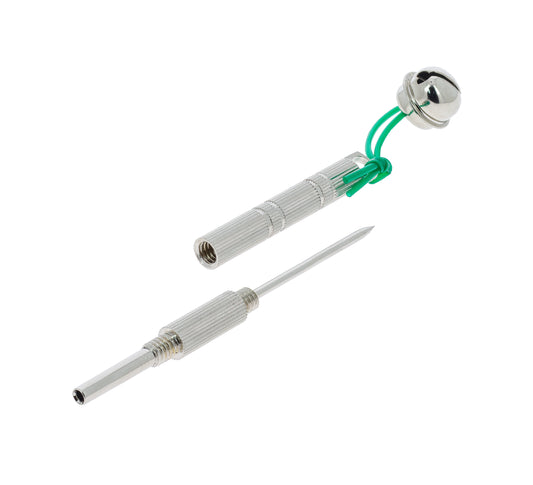
Ikebana, the traditional japanese art of flower arranging
Nature is a fundamental part of Japanese culture. One manifestation of this sensibility is ikebana, the Japanese flower art. With thousands of years of history, different styles and techniques, many of us wonder what it is, where it comes from and how an authentic Japanese flower arrangement should be made?

What is ikebana and what is its history?
Ikebana or kadō -the way of flowers- is the Japanese art of making floral arrangements by combining different natural elements such as plants, green shoots and branches. It is a creative process that is full of meaning and governed by a protocol linked to spirituality and respect for nature.
For those who perform it, it is a way of expressing their emotions and feelings. This is why ikebana is considered a form of meditation. It is usually performed in a silent environment that favours meditation, concentration and introspection.
History of Ikebana
The beginnings of ikebana date back to the introduction of Buddhism in Japan in the 6th century. Buddhists made floral offerings, kuge, of a religious nature that did not follow any specific standard of beauty or structure.
It was not until the Muromachi period (1333-1568) that ikebana emerged as an independent art form in Japan. Ikenobo Senkei founded the oldest school in Japan and tatehana (standing flowers): the first form of ikebana. Tatehana consisted of using a tall container for the flowers to stand in and was used as decoration in the homes of the Japanese nobility.
Tatehana evolved into rikka (right arrangement) in the

religious sphere. It consisted of a tall central branch symbolising truth, with the whole arrangement being a representation of the universe. These flower centrepieces could be very large. Within a short period of time, rikka became an elegant style that set certain standards.
At the same time, nageire emerged as a free style that often used tall containers. Unlike rikka, nageire is characterised by the absence of rules and was used to decorate all kinds of spaces. It was practised by all social classes.
Many more styles of ikebana emerged throughout history such as chaban, shoka and bunjin; however, one of the most characteristic is called moribana, which appeared in the mid-19th century following Japan's period of isolation from the rest of the world, drawing on Western influences, both European and American.
Unshin Ohara was the creator and promoter of this style that changed the history of ikebana by showcasing the arrangements on a flat surface, suiban, where the elements could be freely placed to produce a sense of depth. The Ohara school remains one of the most influential to this day.
How to make an Ikebana Flower arrangement?
There are many aspects to consider in order to make a good Japanese-style flower arrangement:
Rikka, nageire or moribana: what is your ideal style?
Not sure which style of ikebana to choose? Each style of flower arrangement has a unique design and rules to follow in order to be clearly identified:
RIKKA

For rikka arrangements, the vessel is usually made of ceramic with many lacquered decorative elements. The most commonly used natural elements are branches of pine, cedar or bamboo and these usually form the longest and tallest part of the arrangement. The flowers used should be typical Japanese flowers of the season of the year in which the rikka is made.
The peculiarity of the rikka style is that the flower arrangement should not touch the container. In addition, there should be a taller vertical branch reaching for the sky.
NAGEIRE

Nageire is the most informal style of ikebana as it does not have strict rules like the others. The flowers and branches can rest on top of the vessel and can be placed either vertically or horizontally. The purpose of this style is to represent the natural beauty of the plants. It is ideal for beginners.
MORIBANA

Moribana mixes Japanese and Western elements. Its main difference is the flat container called suiban. In addition, the flower arrangements have more volume and colour. Placement, although also important, is relegated to the background.
Tips to make a good flower arrangement
Once you have chosen the style you would like to practice, there are some principles to follow:
- The triangle and equilibrium. Ikebana compositions must follow the Tai-Yo-Fuku triangle: heaven, man and earth. These elements are represented by different materials and heights arranged in a triangular shape in a 70/30 ratio between the highest and lowest branch.
The highest branch, or Zen, represents the sky; the middle branch, or Jin, represents man and the lowest branch, or Tchi, represents the earth.
- Less is more. Japanese flower arrangements are very minimalist and there should be space between the different elements that make up the arrangement.


¿What elements are needed to make an ikebana?
The essential elements to practice ikebana are:
- The container where the arrangement is to be made. In both rikka and nageire, a tall, narrow vase-like container is used. In the moribana style, the suiban, a shallow bowl-like container, is used.
- Scissors to cut the flower stems and branches to the desired height. Each school has its own style of scissors, for example the Ikebono or Koryu.
- The kenzan, the star element of ikebana, is the spiked support on which the flowers and branches are attached. There are various designs of kenzan that allow you to make the arrangement to your liking without limitations, for example: round kenzans, square kenzans and kenzans with more exotic shapes.
- For maintenance and cleaning of the kenzan it is necessary to use kenzan straighteners and kenzan cleaners. This consists of a punch to remove plant debris and a tube to straighten the tips.
Ikebana preparation process
Now that you have prepared the container, the scissors and the kenzan that best suits your choice, it is time to start making the ikebana:
- Choose your preferred style and find the flowers that suit you best. Look for inspiration in books, on the internet, etc. Bear in mind that many trends can exist within each school.
-
Prepare the flowers and plants at your disposal: look at them and try to imagine how they will look in your container.

- Add water to the base and immerse the kenzan. If the container is wide, place the kenzan asymmetrically, preferably at the bottom and to the left.
- Cut the stems, bearing in mind that ikebana usually has 3 heights. Therefore, take into account 3 different vertices: the sky (the highest, at the back), the man (in the middle and to the right) and the earth (the lowest vertex of the three and to the left).
- Check the composition as a whole. The spaces between the vertices are filled with leaves and plants but remember: less is more!
- Remember that ikebana is a meditative process where the beauty of plants and personal creativity come together. There is nothing to imitate; only living nature to observe and, if you are in tune with it, your flower arrangement will be beautiful and unique.

Although it may seem simple, the technique of Japanese flower arranging is very complex and requires a lot of effort and practice to master. Ikebana offers a unique form of meditation as it invites you to open a space of communion with nature. It takes the form of a floral composition of extraordinary beauty that will decorate your altar, home or favourite place for a while. If you are a flower lover or want to try new methods of meditation, why not give the art of ikebana a try?





